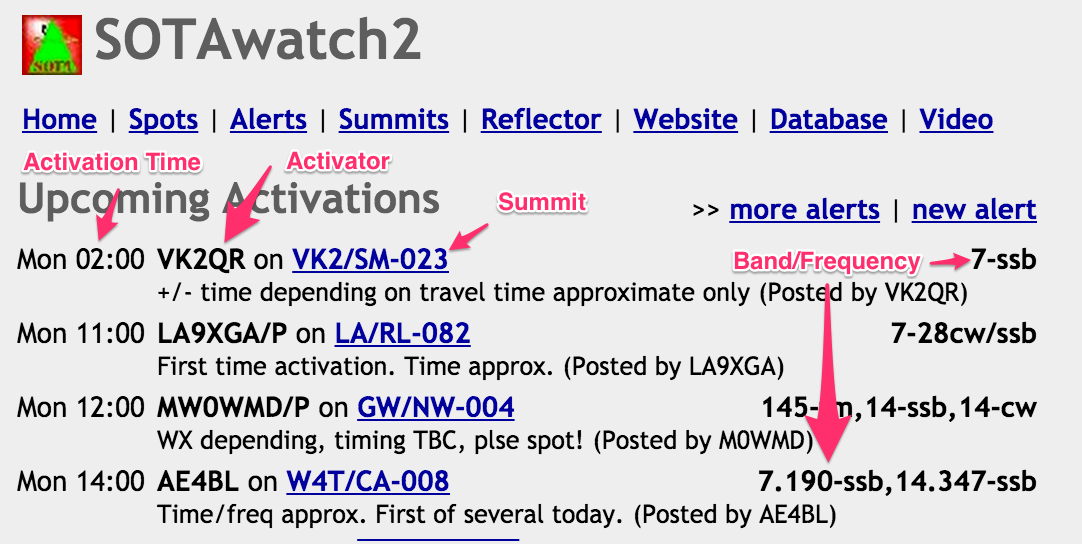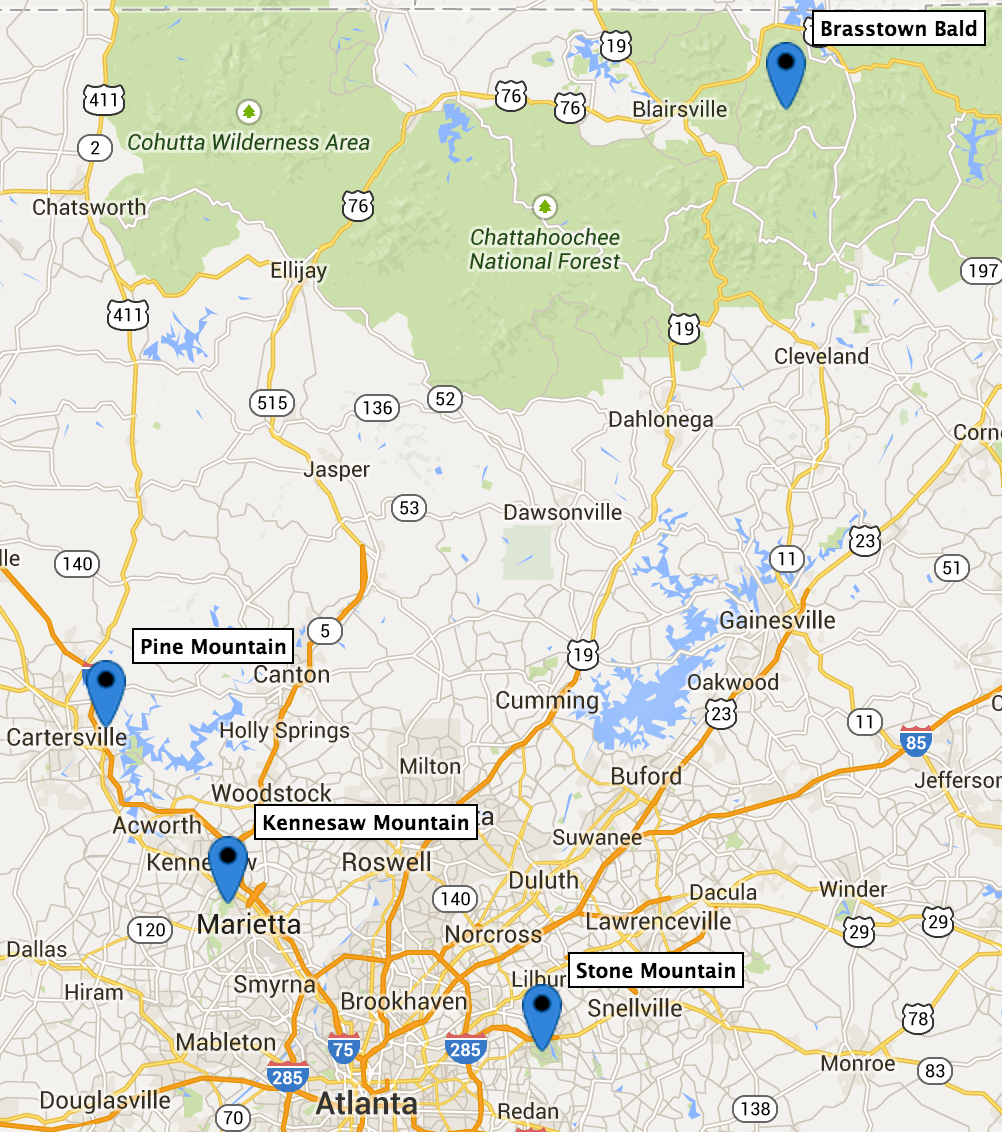Would you like to try SOTA chasing? Basic SOTA chasing is a piece of cake, but there’s a world of subtlety to explore.
The Basics
In order to be a SOTA chaser, there are only two things you really must do:
- QSO with a valid SOTA activation.
- Record your QSO at (http://sotadata.org.uk)[http://sotadata.org.uk].
Finding a SOTA Activation
In order to QSO with a SOTA activation, you have to find an activation in progress. SOTA activations are announced in advance at SOTAwatch. The activator will post his planned activation time, operating frequencies, and modes. All you have to do is to be listening then and there.
Ha! If it were only that easy.
He’s probably not going to start at the scheduled time. He might be climbing a mountain (literally) to get there. He may have to wait out a thunderstorm or a snow squall. When he’s ready to go, he may find his planned frequency in use. These things don’t happen according to a precise timetable.
So you don’t know exactly when or where he’ll turn up, but there are tools to help.
An “alert” is where an activator posts a notice of his intent to activate. A “spot” is when someone has observed an activator on the air from a summit.
You’ll want to monitor the “Spots” section of SOTAwatch as the alerted time approaches. Within a few minutes of calling CQ, the activation will be spotted at SOTAwatch. (If you are lucky enough to be the first contact for the activator, help him out by posting a spot.) There are some other tools for tracking spots, and I’ll cover them in an upcoming article on SOTA resources.

Act Quickly
Conditions on the summit may be perilous. The activator may have an incoming thunderstorm, or may be hurrying to return to the trailhead before dark. Once the activation is spotted, you need to be on the air within a minute or two. Some activations last only a few minutes.
If you can’t get on the air for a bit, don’t despair. Many activators will work several frequencies. If you listen to the spotted frequency and he’s not there, continue to monitor SOTAwatch. If he’s preparing to QSY, the activator may be offline for a few minutes to change his antenna system. He’ll be spotted again after the QSY. Occasionally, an evening activator will return to the air once 0:00 UTC has passed, in order to activate the summit on both UTC days.
Act Politely
SOTA is a small community. We help each other. Reputation is important.
If someone else is calling the activator, stand by. If you hear, “Summit to summit” (S2S), definitely stand by. That’s a QRP chaser from another summit. They deserve all the help they can get! A SOTA pile-up seldom lasts more than a few minutes, and there’s almost always a lull within 5 minutes. Don’t repeat your call when others are calling.
If you’re QRP or you’re having trouble getting through, wait until the pile-up passes. Then call the activator and repeat your call sign, if necessary.
It’s OK to exchange pleasantries, but remember there are other chasers waiting. If you want to have an extended talk, complete your contest-style exchange and wait for the pile-up to finish. Once things are quiet, you can call the activator again and chat.
If you can’t get through, stay tuned. Listen. Try again. Propagation can change from minute to minute.
The activator Is King
Sometimes an activation is easy. Sometimes the weather is beautiful. Sometimes there’s a table and a bench at the summit.
Sometimes the activator is perched precariously on a snow-covered boulder and is slowly sliding off. (Been there! Done that!) A bear may wander through the site. (It happened to KI4SVM!) Be patient. Be tolerant. Even without surprises, if he had to hike 5 miles uphill to get there, he may be befuddled by exhaustion.
The activator wants to complete the QSO. Help him make that possible. Recognize that he may be facing challenges.
Recording Your Successful Chase
Once you complete the QSO, you’ll want to record the fact at SOTAdata.
Operating Bands and Modes
Most SOTA activity happens on 20 and 40 meters, using SSB or CW. You’ll find a smattering of other HF bands (particularly 17 or 30 on a contest weekend), but seldom another mode on HF. Some activators are exclusively CW; some are exclusively SSB; some use both. If you see an alert for an activation that doesn’t include a band/mode you can work, email the activator and ask him to try your band/mode. However, be aware that many activators carry tiny radios that only work limited bands on CW.
If you’re a Technician, you’ll face some challenges, but they are surmountable. One option is the 10 meter band. If you want 10 meters, you should contact the activator and ask him to try it (if his rig supports it).
VHF is another option. To succeed with VHF, you’ll need a good antenna. It helps if you can aim it at the summit. If you’re limited to this mode, contact the activator in advance and ask him to use it. Some activators will have only a rubber duck antenna. Others specialize in VHF and they’ll have a beam. If they know you’re there, they can aim for you. VHF can be worked over surprisingly long distances because line of sight from 5,000 feet up is much farther than in the ‘flatlands.’
If you’re using VHF, the contact must be direct! You can meet up with the activator via a repeater, but you must complete a simplex QSO in order to qualify for SOTA.
A Word About Antennas
If all you’ve got is a low dipole, that’s going to limit your chasing. Use what you’ve got. You’ll need to focus on activations within an NVIS footprint. Again, contact the activator in advance and ask him to try NVIS on a suitable frequency. North Georgia and western North Carolina are full of summits and they are workable NVIS from Atlanta.
If you’ve got a beam, you’ve got an advantage. As an activator, one of my most reliable contacts is transcontinental, from the southeastern Appalachians to NS7P in Oregon. He’s got a beam at 60’, a K3, and lots of skill. Make the most of what you’ve got.
Reliability
If you chase often, activators will learn your call sign. Reliability helps. If he hears your call often, he’ll recognize it easier and quicker. If you’re a ‘regular,’ he may extend his activation in an effort to catch you when you’re slow to get on the air.
See you on the summits!
73 DE K4KPK / Kevin
Where can I find out more?
- Official site: http://sotadata.org.uk/
- Mailing list: https://groups.yahoo.com/groups/summits
- K4KPK’s site: http://k4kpk.com/content/sota-menu
- Email me (K4KPK). My email address is available via http://www.qrz.com/db/K4KPK.
- Stay tuned. This is a recurring series.
Bio
K4KPK, Kevin Kleinfelter is Georgia’s first SOTA Mountain Goat, and was the 19th North American to achieve Mountain Goat. His first QSO was on a backpacking trip to a 5300 foot summit with his 12 year-old son. He has more than 115 activations, including Georgia, North Carolina, and Tennessee.
This story is Copyright 2014 Kevin P. Kleinfelter. A non-exclusive right to redistribute in electronic or printed form is granted to amateur radio clubs operating in the metro Atlanta area. All other rights reserved.

